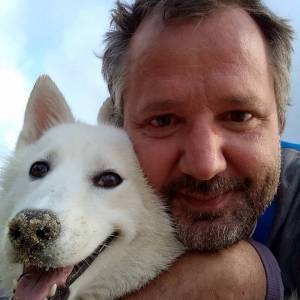Streetlife
(This blip is related to the last one in this series of reflections. It explores one specific aspect of photography that represents a special challenge in street photography and is becoming increasingly important to my approach to shooting out in the streets.)
1
Most of the pictures in my father's archives show people he knew or came in contact with through his work. In many of them, people pose for his camera (posing is another fascinating topic that merits its own reflections). There is, however, a handful of slides that depict everyday scenes of life in the Brazilian Sertão and Amazon. These pictures have always fascinated me, but I couldn't tell why.
2
When I first started photographing out in the streets, I kept looking for interesting subjects: little scenes that represented typical situations of daily life in our town, like this family of natives from the tribe of the Pataxós who spend their nights on the floor of the bus station downtown, or this mother impatiently waiting for her child to come home. It is a very stressful way of doing street photography because you have to be at the right place at the right time and you have to react in a split second. It is fun and gratifying when a picture like these happens, but - to a certain degree - you depend on luck.
3
Being aware isn't always enough. Having your camera ready and your instincts on alert doesn't make things happen. This dependence on fortuitous circumstances always bothered me, and I wished there was a way of doing street photography that wasn't as nerve-racking.
4
Then, recently, I read an article on Facebook by a fellow photographer who hinted at the obvious: "I don't photograph things", he wrote, "I photograph light." Light is everywhere. If you can see something, it's because there is light. Light is most visible at night. Etc.
5
Looking out for light instead of things took away a lot of the pressure I put on myself when doing street photography. Photographing light is, in one way, easier because, under normal circumstances, light behaves differently from a blink of an eye. During the day, you can wait for it to change. You can anticipate it. You can interact with it by changing your position. At night, it's even easier to work with because many of the sources of light are manmade and therefore constant. They give you time to position yourself, choose the correct settings, play with the camera.
6
And there it was, the solution to the magic of my father's street shots. I don't know to what extent he was conscious of the light and shadows, of the interplay between brightness and darkness when he made these pictures. To me, he always seemed more interested in his subjects than in something as ephemeral as light. But I might be wrong. When I look at these very special photographs, that's where the whole drama is.
(I took today's blip last night while walking through our neighborhood. There is a dark intersection of streets just a few blocks away. On one side, there is a small patch of abandoned land that the kids use as a soccer field. It is lit by one single lamppost. All the action in this picture is carried out by light and darkness.)

Comments
Sign in or get an account to comment.


